Essentials on the what to pack list:
No 1: Waterproofs
First up on Julia’s walking holiday packing list are waterproofs. “Wherever you’re going, whatever your destination, pack your waterproofs,”
At the moment, most of us a feeling a wee bit more tied down and unable to go out for much outdoor exercise during lockdown. However, even though you may have to do the same or similar walks from home for a while, there are ways to make your regular walks more entertaining
Inevitable with more people “working from home”, getting out and about on the paths surrounding your home and maintaining your social distance is becoming more difficult. Why not turn it into part of the challenge for your walk? How many people did you see when out today? What did you do to avoid them? How could you manage a completely isolated walk? – Walk at midnight? Can you manage an invisible walk?
Nettles are in season right now, but you’ll have to be quick as they’ll quite quickly become too big to be tender enough to use for soup – recipe coming soon.
Wild garlic is also in season. We have some pasta base and pesto recipes for wild garlic and have also made some wild garlic ice cubes to add to our pasta/stew recipes
Spring foraging recipes to follow shortly
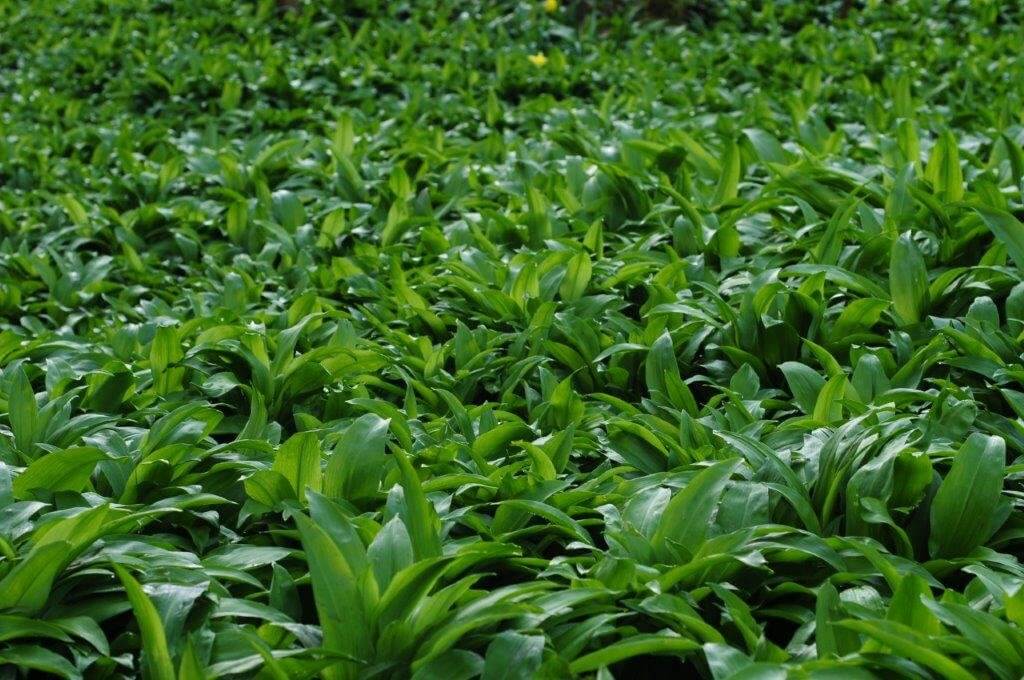
Wild garlic
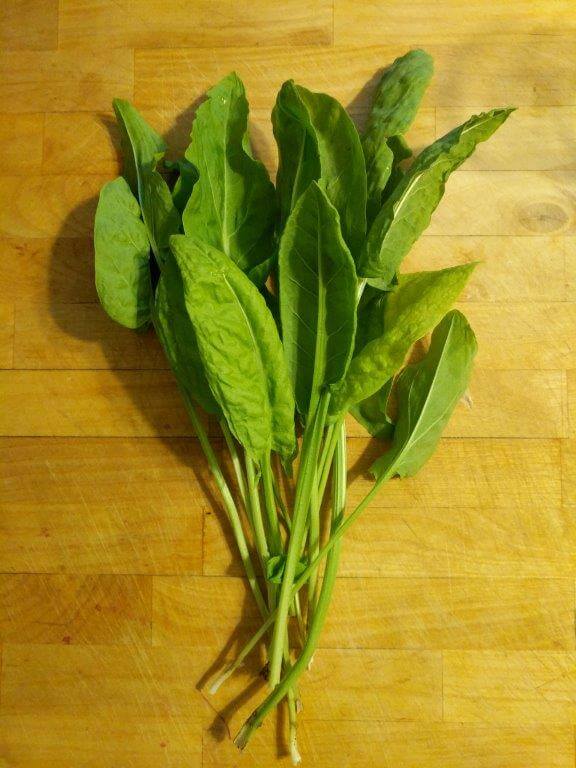
Sorrel
Listen to the birds which are out around you and see if you can identify them by the song you here. Check your identification with the app on your phone. You might be surprised what there is in your locale.
The Woodland Trust have very good tree identification app which now I come to think of it has been recommended by other people to me.

It’s amazing how different a walk can seem at night as opposed to during the day. You could try and do what we’ve done in the past and take a torch with you to spot “eye shine”. This is when your torchlight reflects back off animals’ eyes. For example, you can see from the eye shine that there are a lot more deer out in the woods than you thought during the day
There are a few different options and fortunately someone else has already done an analysis of the options. Take a look at this blog.
If you don’t have an audible subscription yet, I would recommend it. Though there are also plenty of podcasts out there to keep you company on your walk, a book lasts longer. We enjoy audiobooks while we’re travelling in the car, but as we can’t do that at the moment, enjoying some listening while walking a route you’ve done many times before can make things a wee bit more interesting. You might not have anyone else in your household to enjoy outdoor exercise during lockdown, the audiobook could be good company if you choose well. There are also lots of inspiring walking, hiking, climbing and travel books which have been narrated to keep you inspired.
Some recommendations:
Touching the Void (Joe Simpson)
No Shortcuts to the Top (Ed Viesturs)
The Marches (Rory Stewart)
The Living Mountain (Nan Shepherd)
In the Cairngorms (Nan Shepherd)
Suggested podcasts:
Scotland Outdoors
The Adventure Podcast
Sounds of the Trail
Of Mountains and Minds
Also checkout this recommended list put together by Much Better Adventures.
Nothing like feeling as if you’re still part of a community, even if it is online!
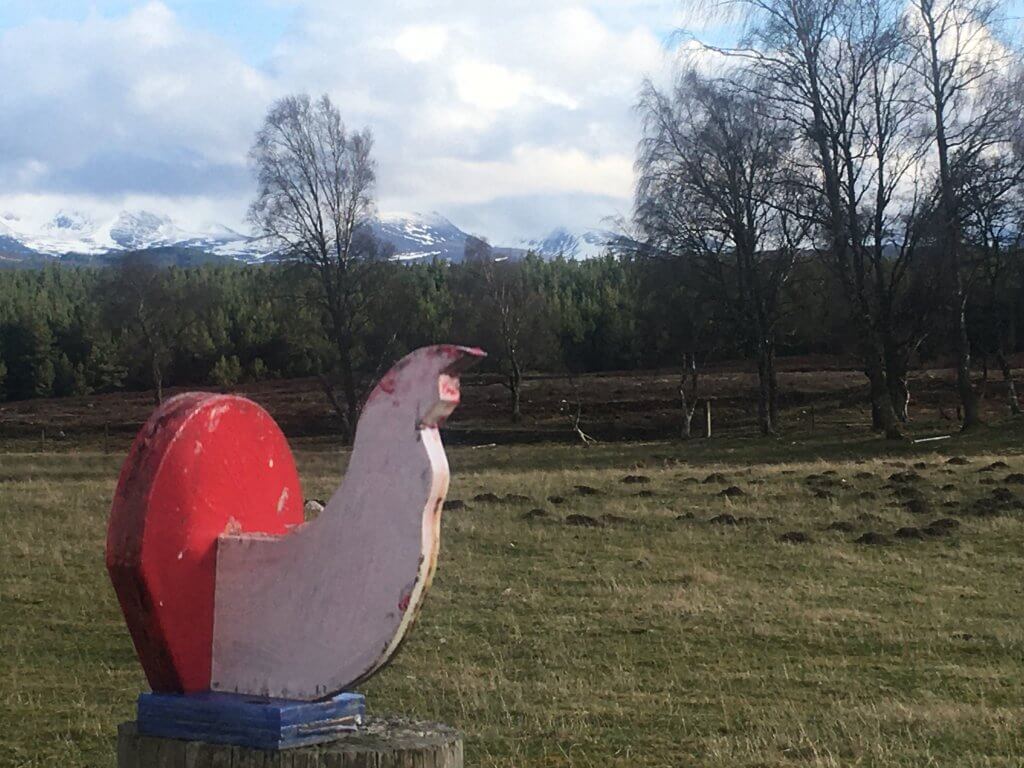
However you manage to enjoy your more limited time outdoors this spring, do take care but at the same time – keep fit and ready for a time when we can head back into the outdoors as much as we like.
We work from home every day. For the entire time in which we have been running Scot Mountain Holidays our home has been our business. However, this is an unusual blog post for us, due to the unusual circumstances in which we find ourselves at the moment. Normally we don’t look so much behind the scenes at working aspects of Scot Mountain Holidays. But perhaps now the time has come to share with you our tips for working from home – one side of our business we don’t usually boast about. As you’d expect from a small business like ours, we work from home. However, to complicate matters further our home is also our business. We’ve had to struggle for years with balancing home and work but now we’ve also got to add in the home schooling complication. We thought we might share some of our tips with you – though we realise some will be more difficult to adhere to than others.
Make sure you take some time first thing in the morning or last thing at night to make a list of what you’d like to accomplish. It’s difficult to stay really motivated right now when there doesn’t appear to be an end in sight to the restrictions placed on our lives by the government, but it will come to an end. Will life have turned around completely by then? It’s doubtful. I have no doubt that when we can, we’ll get back to the adventures we hoped to have this year.
we all need structure in our lives. If we drift aimlessly right now, all we’re going to accomplish is being up to date on Facebook and other social networks and chatting endlessly online.
during your working hours (whatever you designate as your work time – doesn’t now have to be a 9 – 5 day) don’t be tempted to read the news, watch TV/Netflix/Amazon Prime etc, go on your social channels to take a break. Before you know it, half the day will have disappeared and you’ll not have accomplished any of the tasks you set yourself.
over the years we’ve had a few different work setups. In the very beginning, when a lot less of our work was online, we even shared a computer. Not advisable, especially now! Even Gregor (age 11) has his own Chromebook now he is doing Google classroom instead of going in to school. Never share an office if you have enough space to create your own.
It’s very easy when you’re working from home to end up working all the time. Or at least you might think you are.
It’s easier when you’re at home to get stuck in a rut.
Decide what your project is going to be for the next wee while. If you have the luxury at the moment of having a bit more time on your hands than usual (which despite having no guests to look after, I don’t have) set yourself a target –
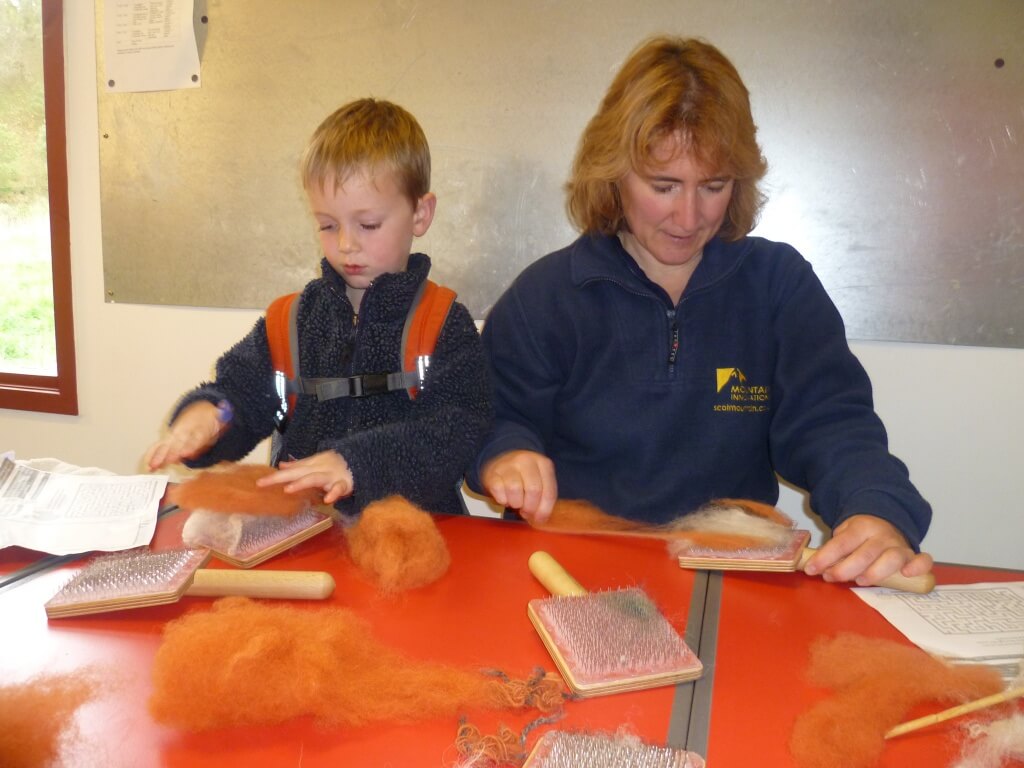

Our edible garden behind Fraoch Lodge

Eve reads Gregor a story
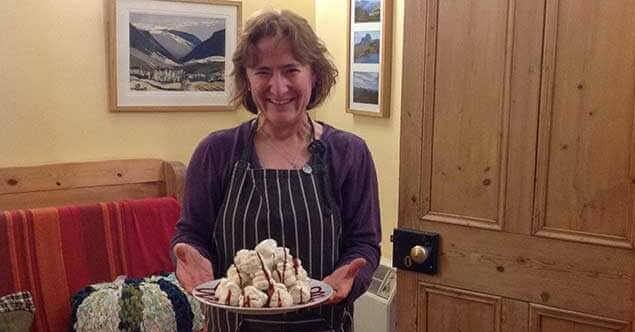
Amazing meals at Fraoch Lodge
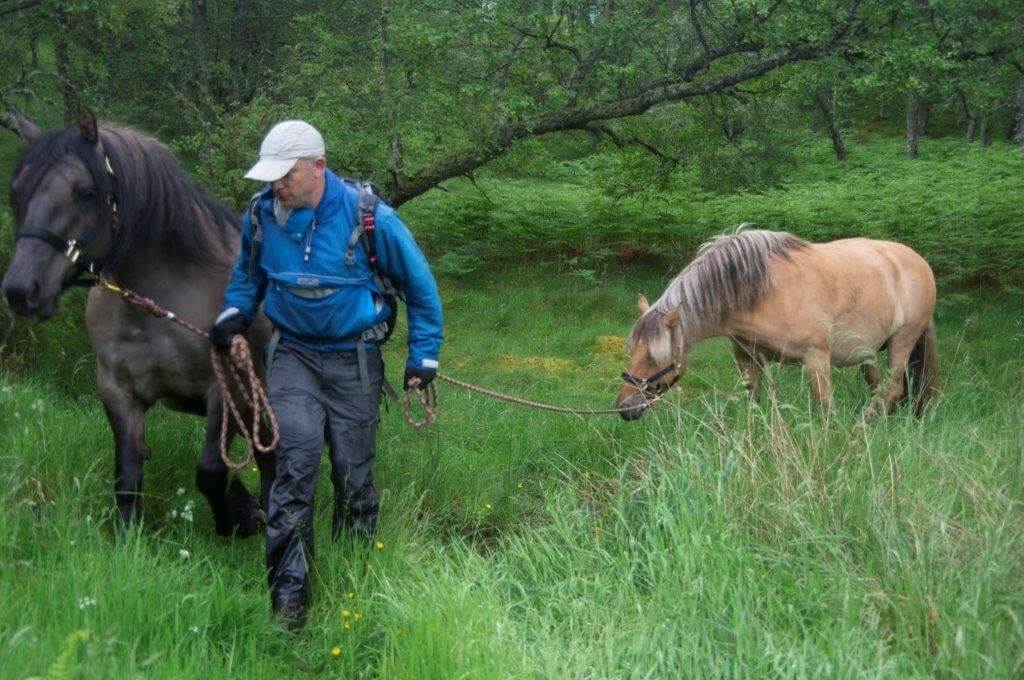
Ponies in training
I’ll put up some weekly menus shortly and you can let me know if any of them are possible to create at the moment or what adaptations you’ve had to make (if they worked).
The trouble with planning a hiking vacation in Scotland is that you are almost spoiled for choice. There’s no way you will be able to fit everything in to one vacation.
The scenery on Skye and around the west coast of Scotland is remarkable from the road. It has inspired movies such as “Brave”. The draw is understandable but the disadvantage is that for Scotland it can be “touristy”. It will be unusually busy with other visitors. If you’re looking for a quiet experience of Skye when you have a chance to enjoy the scenery without the crowds, you’ll need to consider taking the time to explore there out of the main tourist season. April, May and September are the best times to head over there. You have a high chance of good weather and a low to non-existent chance of encountering the dreaded midges.
In recent years, particularly since the Land Reform Act (2003), there has been public money available to develop paths across Scotland. This has resulted in a proliferation of way marked long distance routes. The Land Reform Act (2003) formalised the right of access to all land in Scotland, whether privately or publicly owned. Access rights are for outdoor recreation, for crossing land and water, and for some educational and commercial purposes. Exercising access rights, and managing access land, must be done responsibly.
The most well-known of the long distance routes is the the West Highland Way, but there are many others like the Speyside Way (the one to do if you’re in to whisky). Another recently mapped route which is less formally organised is the Cape Wrath Trail. This trail is described by Cameron McNeish as: “It’s the sort of long distance route that most keen walkers dream of. A long tough trek through some of the most majestic, remote and stunningly beautiful landscape you could dare imagine.” You can research more details here: http://www.capewrathtrail.co.uk/foreward.htm There is also a recently published map by Harvey maps covering the area involved.
A full list of long distance paths across Scotland is available here:http://walkhighlands.co.uk/long-distance-routes.shtml They range in length from 338km to 38km. Some can be linked together to make a longer route.
The disadvantage, depending on your point of view, of most long distance paths in Scotland is though they go through mountainous areas most if not all of these routes do not go up the mountains so if you stick to the waymarked route you’ll only be admiring the peaks from afar.
Photo Caption: Long distance path walking in Scotland
There has been quite a lot of investment in path construction and signage in Scotland since the development of the Outdoor Access Code in 2002. There are opportunities virtually everywhere to get out of the car and explore a wee bit to a viewpoint or through spectacular woodlands or around a loch etc. The difficulty is in knowing which option to choose.
WalkHighlands can help with this in that all the walks they list are graded and have an estimated length in distance and time. However, possibly the best way of choosing is to ask your hosts at your accommodation for their recommendation of the best walk to choose and if you have a wee bit more time available take advantage of a guided walk as you will gain so much more insight into the area from the guide’s knowledge. There are ranger guided walks in most areas, particularly in the National Parks like the Cairngorms and the Trossachs which will reduce the cost. Some of these walks are even free. Boat of Garten has it’s own ranger service offering guided walks around the woods behind the village. The RSPB also offer guided walks on the Abernethy reserve.
The advantage of booking a walk with a guide is that you’ll be able to get off the beaten track with confidence. You might even be able to do a longer walk or go higher than you would be confident doing on your own.
A guide will also have extensive knowledge of the local folklore, the environment, the flora and fauna as well as the terrain through which you are hiking. There really is nothing better for bringing the area alive to you. As a student or cash strapped tourist you may consider the cost relatively high. However when you look at the cost of eating in a restaurant or your accommodation for the night, you’ll realise that on an hourly rate your guide is not charging a lot of money. A qualified mountain leader will have invested years of training into his qualification not to mention the cost of the training course itself.
A qualified mountain leader (or accompagnateur) will charge from £150 – £200 for a day out. This fee will be split across the clients in the group. The larger your group of family the less the cost per individual. The rewards of going out with a guide for the day are however beyond price as you will learn so much more about the area which you won’t find in the guidebooks.
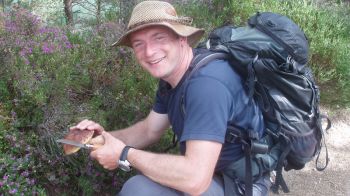
Most organised hiking tours will explore only one area in depth. While this approach is not for everyone (many people visit a country with a tick list of sights they want to visit – which are inevitably the same spots 90% of visitors also want to see, resulting in overcrowding), if you go on an organised vacation you are often more likely to have a more genuine and authentic experience of the country you are visiting.
It is worth checking that the company you book with has a philosophy which appeals to you. Also that the structure of the trip suits your priorities. For example, if you are thinking of booking with Scot Mountain Holidays but it is important to you to have 5 star hotel style accommodation, rather than a home away from home, you will probably look elsewhere for your trip. The philosophy behind our vacations is that our guests stay within our home. They immerse themselves in the atmosphere and feel comfortable discussing all aspects of life in Scotland.
Of course, if you have enough time you could consider a shorter, organised trip as part of your vacation and tour the rest of the country by car/bus.
Think about access – a major consideration as part of the planning. Some areas of the Highlands are more difficult to reach than others. For our organised vacations we have tried to make it as easy as possible for our guest to access them. We offer pick ups from Aviemore station and Inverness airport. In the Cairngorms, we are lucky enough to be near the major route north from Edinburgh – the A9, which makes it very efficient to get here.
It may look like it isn’t far to reach some areas of the Highlands but travelling on narrow, sometimes single track roads, will take longer than anticipated.
When planning your trip bear in mind that reaching some areas by public transport can be time-consuming. Many of the routes used have to go around rather than through the mountains.
Scottish weather has it’s own reputation. Everyone who comes to visit seems to be prepared to be cold and wet. Many are pleasantly surprised when they come to stay with us. Scotland has a great many ambassadors who spread the world all over the world but there’s no getting away from the fact that it is a green and beautiful land and that green comes at a price sometimes. However, it is possible to minimise the effect a poor weather day could have on your vacation.
A quick comparison between a relief map of Scotland and the annual rainfall map shows a very close correlation. The higher you go the higher the annual rainfall. The altitude of the land can change considerably in a single mile and so can the amount of rainfall both on an annual and daily basis depending on the prevailing wind direction.
The point is, the Scottish Highlands are packed with micro climates and by jumping in the car and placing big mountains between you and the prevailing wind direction, you can massively improve the weather you’ll experience for your day. It can be the difference between frequent heavy down pours and sunshine with the odd very light shower. If active frontal systems are sweeping across the country, well you’re probably going to experience some kind of precipitation at some point wherever you are but if they’ve all passed through and it’s just an air-stream scenario then some judicious planning can pay handsome dividends.
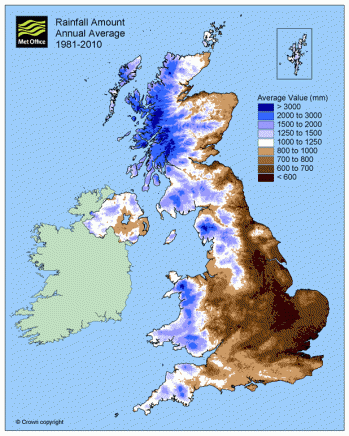
I remember turning up at a house in Glenfeshie one April. I was to guide the group of ladies up from the London area. The forecast for the N. Cairngorms was not good: 70 mph NE winds, blizzards above 800m and torrential rain. I arrived to the gutters overflowing but having studied the weather closely I suggested we jump into the cars for an hour and drive around to Pitlochry on the leeward side of the range to do Ben Vrackie. The suggestion wasn’t greeted with any enthusiasm and possibly a certain amount of doubt but the thought of an hour in a dry bus was better than an extra hour walking in the heavy rain.
As soon as we passed over Drumochter Pass the weather started to improve (as is often the case) and by the time we got around to Pitlochry we were in sunshine to the comment of “Andy, haven’t you done well”. We had clear views from the summit, albeit in a strong bitter wind. On passing back over the pass we drove back into the bad weather. ‘Had it been wet and horrible all day’ I asked Rebecca, my partner. “Yes’ was the answer.
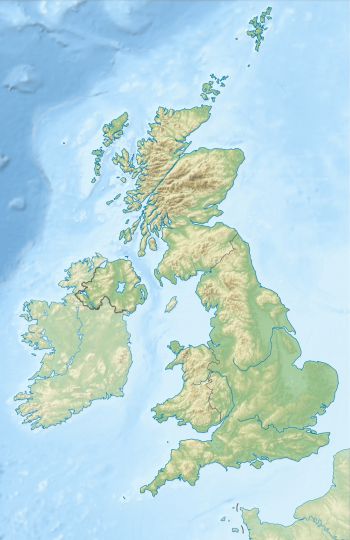
The prevailing weather/wind direction makes a big difference. If there’s bad weather on the way make sure you’re on the sheltered lee side of big mountain ranges. One of the most common comments made by visitors is how changeable the weather is.Don’t judge the days’ weather by what’s happening at breakfast.
So when it comes to planning your tour, if you can remain flexible and not book things too far in advance it can often make a big difference. Avoiding the high season from the middle ofJuly until the end of August can be a big help in this regard. April & May can produce some of the best weather.
The vast majority of Scotland’s bad weather comes in from the south and west. You will notice the east side of the country is considerably drier than the west. In fact the west coast ofScotlandcan receive up to 3 times the annual rainfall of the east. So by basing yourself, for example, in Strathspey or in the North East side of the Cairngorms National Park you can often greatly increase your chances of experiencing better weather. Also, with easy access to the main road routes to Ullapool in the North West Highlands and Fort William in the West Highlands are only 1hr 40mins and 1hr 30mins away respectively from Aviemore it’s easy to make a foray into these areas.
This is you buying into in-depth local knowledge of suitable locations with regards to the weather conditions. Adventure activities also provide you with the opportunity to immerse yourself in the beautiful landscapes and amazing wildlife of the Scottish Highlands.
Adventure Tour Operators in Scotland
Highlands and Islands Adventures (mountain biking specialists)
Walking holiday providers in Scotland
When you go travelling one of the things you’ll find most interesting is to explore the local cuisine. This is no less exciting in Scotland. It’s not all haggis here! It can even be an adventure even for visitors from across the border! Here are some Scottish food classics for you to explore.
How many of these Scottish classics are familiar to you?
This has to be one of the most famous Scottish food classics available. I’m not sure it’s quite on a par with “Scotch”, whisky or malt, all the same thing though the name varies, depending on who you speak to. Haggis exports have been more limited though and US customs regulations have meant that we’ve been unable to spread the haggis far and wide across the US. It doesn’t always travel well. One businessman who flew from the Highlands to Birmingham was pulled to one side and accused of carrying explosives (which turned out to be his haggis).
Modern squeamishness puts a lot of people off trying haggis, but it is quite environmentally friendly in its way. It uses parts of a sheep that might otherwise be thrown away. A traditional haggis is made with “Sheeps ‘pluck’ (heart, liver, and lungs), minced (ground) with onion, oatmeal, suet, spices, and salt, mixed with stock, and traditionally encased in the animal’s stomach and boiled” Doesn’t sound appetising – but tastes delicious.
We normally bake our haggis here as we find it makes the haggis more succulent and less greasy or less soggy. Or alternatively we make haggis stacks, as below. Easy but impressive way to serve up haggis. Check out our blog on haggis and bagpipes

Haggis stacks: a round of haggis, a round of neeps topped with a round of mashed potato with green beans wrapped in prosciutto and drizzled with whisky and mustard sauce
A lot of visitors get very confused by the abundance of Scots words we still like to use liberally in everyday speech.
“Neeps” are Scottish turnips (what are known as the vegetable Swede in England). Try describing a “neep” to a foreign visitor. Most have no idea what you’re talking about and may not even be familiar with them as human food in their own country. Some think of them only as animal food and to be fair you do often see them liberally scattered across the fields in winter to feed the sheep and cattle.
“Tatties” – potatoes
The Scots, just like the Irish, love their potatoes. Mashed, fried, boiled – all forms of potato are good and often appear on the plate if you eat out in Scotland – far more common than rice or noodles, much to the horror of our Asian visitors.
 Porridge or ‘Parritch’ is a favourite breakfast here in Scotland. It’s very similar to what the Americans call oatmeal, except that porridge can also be made with rolled oats. Traditionally porridge is made only with oatmeal, water, and salt. Ours here at Fraoch Lodge is a wee bit less traditional.
Porridge or ‘Parritch’ is a favourite breakfast here in Scotland. It’s very similar to what the Americans call oatmeal, except that porridge can also be made with rolled oats. Traditionally porridge is made only with oatmeal, water, and salt. Ours here at Fraoch Lodge is a wee bit less traditional.
Porridge recipe at Fraoch Lodge:
1 big mug of oats, water, and milk. Heat at a medium-low until thick and creamy. That’ll do about 4 grown adults alongside some honey, fruit compote, chopped fresh fruits and maybe even some home-made granola on top. The consistency is up to you, lessen or add liquid to your preference.
 To put it simply, Scotland and the Scots take massive pride in their whisky, and why not? There are around 120 whisky distilleries all over Scotland, and all have their unique designs and flavours. Notice the difference in the spelling of the word, some people, like our Irish and American brothers and sisters, include an extra ‘e’ to make whiskey. It doesn’t make too much of a difference to the item that it describes, but just to keep in mind that there’s probably a Scot who won’t hesitate to correct you.
To put it simply, Scotland and the Scots take massive pride in their whisky, and why not? There are around 120 whisky distilleries all over Scotland, and all have their unique designs and flavours. Notice the difference in the spelling of the word, some people, like our Irish and American brothers and sisters, include an extra ‘e’ to make whiskey. It doesn’t make too much of a difference to the item that it describes, but just to keep in mind that there’s probably a Scot who won’t hesitate to correct you.
The beverage itself is not just enjoyed straight from the bottle with some whisky rocks on a cold Scottish evening by the fire, it can also be used to flavour both sweet and savoury recipes. Here at Fraoch Lodge, we’ve used our whiskies to flavour our home-made orange marmalade down to the delicate and creamy whisky sauce that is perfectly paired with the Haggis stacks pictured above. It is a more versatile item than you think and well-beloved by the Scots, so to bring one (or two) bottle home with you after your visit certainly wouldn’t hurt. (Whisky sauce is great with pan fried salmon too.)
![]()
These are not just a Scottish classic, but a lunchbox must-have for kids and adults everywhere. There are many versions of this chocolate-caramel snack around the world but this one certainly has a spot in our hearts that remind us of home. Tunnocks (the family-run business based in Scotland) has been a beloved provider of said snacks since the 1890’s. Its sticky-sweet caramel alongside the crunchy wafers dipped in milk chocolate is an unbeatable feel-good snack whether you’re walking up a hill or walking the dog. I for one can’t settle for just one piece! Now that you mention it… *opens up a caramel wafer* Also famous in the children’s book series: Tom Gates by Liz Pichon.

This magical meaty invention will break your sausage expectations. The sausage is thought to be named after Lorne in Argyll, Scotland… and it is square. Yeah, that’s right, it’s a square sausage. This and ‘tattie scones’ are what makes a Scottish breakfast so distinct from all the others around the UK. It’s got the usual mix of minced pork and beef, alongside rusk and spices like a normal sausage, apart from the fact that it’s square. It tastes delicious by the way, don’t knock it ’til you try it! But also, it fits so perfectly well inside two pieces of bread. Some even have a piece of black pudding in the middle, and if you don’t know about black pudding yet, keep scrolling.
Now, I know what you’re going to say… “What in the world were the Scots thinking?!” But hear us out, it may just change your life. The battered Mars bar is what it says in the carton, it’s simple and yet so special. Just get your chocolate bar of choice, (yes, it doesn’t always have to be a Mars) dip in the batter and deep-fry in vegetable oil.
A few tips to get the best result possible:
When you discount all the calories and potential risk of going up a clothing size, it is well worth it.
Gat ye me, O gat ye me,
O gat ye me wi’ naething?
Rock an reel, and spinning wheel,
A mickle quarter basin:
Bye attour my Gutcher has
A heich house and a laich ane,
A’ forbye my bonie sel,
The toss o’ Ecclefechan. The Lass O’ Ecclefechan a poem by Robert Burns 1795

First things first, if you’re pronouncing the name of this tart as if you’re gathering phlegm and then deciding to swallow it, you’re probably pronouncing it right. This tart, otherwise known as the ‘Border Tart’ is named after a village in Dumfries and Galloway, south of Scotland. The texture of this one resembles a lovely pecan tart except with walnuts alongside other flavours too, like cinnamon, lemon and raisins. It is considered a substitute for its not too distant English cousin, the mince pie, but instead of just being allowed to consume it during Christmas, the Ecclefechan is available all year round.
I’m not going to lie to you, I was first dubious when I was served it on a plate with a small pot of cream beside it but by God, when I took my first bite, I did not care what it looked like. It’s a taste that I can only describe as Ecclefechan and it blew my mind. I prefer this tart with custard for sure, but you can have it with cream (whipped or not), ice cream or custard.
If you happen to come across a cafe that serves this beauty, don’t hesitate, just get it. If it’s not to your palate, at least you’ve tasted a bit of Scottish history.
 No this is not medicine, nor is it a piece of technological gadget. It’s a super sweet Scottish treat! A little disclaimer, one must defer from giving to already hyperactive children, it may cause carnage.
No this is not medicine, nor is it a piece of technological gadget. It’s a super sweet Scottish treat! A little disclaimer, one must defer from giving to already hyperactive children, it may cause carnage.
This piece of confectionary is 85% sugar, so you don’t need a lot to feel that rush. It’s got a grainy yet melt-in-the-mouth, buttery texture and also has a wide variety of flavours, i.e. whisky! Tablet is not quite as soft as fudge but not as hard as a hard-boiled sweetie. It’s super simple to make and if you click the link in the title, you too can make this simple yet irresistible treat for you or your sweet-toothed friends!
Ye cannae complain!

classic shortbread
Shortbread… where do I begin? It’s neither short nor is it a bread, but is more of a crumbly, buttery biscuit. It is prominent in most Scottish households and Scottish supermarkets, as well as tourists who’ve just come from Scotland, will find themselves with boxes and boxes of Shortbread to give to their friends. Some in tins, some in boxes, but you can be sure that it’s either got a Scottish terrier in front or some sort of tartan design.
This historic beauty of a biscuit dates back to the 12th century and was said to be Mary Queen of Scots’ favourite. It is a staple for afternoon teas and are available in most cafes. It is a versatile piece that can be flavoured to your liking, such as chocolate and cherries. Here at Fraoch Lodge, we make our Lavender shortbread for when we have a lot of Lavender kicking about in the garden. When dipped in dark chocolate and sipped with tea, it is a divine thing to have on the palate. Click on the link in the title to make it yourself!
Apart from the Whisky, the nation would describe this orange-coloured carbonated soft drink as “Scotland’s other national drink.” I’m not a big fan of this particular drink myself but will drink it if given no other choice. My Scottish friends are adamant that I’m crazy to not like their “other national drink” but I’m sure I’m not the only one. I would still be careful about turning a can down though if you’ve been offered… the identity of this drink is so deeply rooted within the Scottish psyche that you might well cause offence.
It was initially named “Iron-Brew” but was not put up for sale until after health allegations were cleared up. Basically, the English thought that the drink itself had iron in it. The title changed to “Irn-Bru” in the year 1946. It’s popularity shot up after the wartime as they correlated their advertising to the comic strip “Adventures of Ba-Bru”. It was considered so outrageous that the style of advertising is still used today. Have a click on the title to see some advertising hilarity!

Fish And Chips Recipe — Dishmaps
The fish supper is not merely a foodstuff in Scotland, it is truly a tradition. It would almost be a sin to come here and not have a fish supper for one of your meals. Fish, usually haddock, was one of the main food sources during wartime Great Britain. Paired with chips (fries to our American readers) it managed to keep the population of Britain somewhat sustained. Fish and Chips is now considered a staple, or comfort food. After a long day out on the hills, or after a tiring day out climbing, the thought of having a fish and chips at the pub is as comforting as the thought of a warm bath.
Thinking of the crispy batter surrounding the flaky fish fillet inside is enough to get your feet moving through the hardest of times. Truly a shame if you don’t like fish.
Stornoway Black Pudding – Black Pudding – John Davidsons …
Okay, I have been asked this many times before, “Why is black pudding called a pudding?” We realise that the word ‘pudding’ makes one imagine a soft and creamy dessert as opposed to blood sausage. Yes, blood sausage. It was a way for our ancestors to use every single part of the kill. Then nothing would go to waste. The blood of the animal after it’s been killed doesn’t keep for very long. This way they could make it into something tasty. Now, this particular piece isn’t just of Scottish origin but has been popular all around the United Kingdom and Ireland. It is one of the many components of any Scottish, English and Irish breakfasts.
The taste is rather distinct and can only be described as black pudding. It can be grilled, fried, baked or boiled in its skin. Before you knock it down, do give it a wee try. I can say from personal experience that this ‘pudding’ is particularly delicious.
Stornoway Black Pudding is said to be the best. On one of our trips to the Western Isles, one of our clients was fixated on picking up some black pudding to take home before we left Lewis. (She succeeded.)
The Royal Burgh of Cullen in Moray, Scotland has stamped their name on this particular dish after having created it as early as the 17th century. Its main ingredients are smoked haddock, potatoes and onions. It’s usually served hot as a starter dish for posh meals. Or you can also have it with some lovely fresh bread as a hearty lunch.
It’s closest relative dish is the American clam chowder. Cullen Skink has a more distinct taste though because of the smoked haddock. I, for one, love a good Cullen Skink, it’s hearty, warm and full of flavour. Click on the title link. You can have a hand at making it yourself, but beware, the fish smell is a strong one. We found a recipe for cullen skink pie and cullen skink tart, both of which are out of this world. We’ll share on our recipe blog!

Macaroni pie
Everyone knows the good old mac n’ cheese, with its variations from all over the world, heck, even your own mother has her own take on it. The Scot’s macaroni pie is what it says on the tin. It is macaroni and cheese but within a Scotch pie crust. You really think this dish could still use more carbs on top of the pasta: *not*.
Needless to say, it’s a filling dish if one needs to bulk up. It’s also a great way to serve up mac n’ cheese in a bowl you don’t have to wash.
We’re sure that there are plenty more we’ve missed in this list. We’re working our way into tasting everything about this beautiful part of the world. What’s your favourite?
Some twisted versions – Can’t wait to try some of these. We might even practise for our own St Andrew’s. What do you fancy?
 How to avoid cold hands and feet on your bike
How to avoid cold hands and feet on your bikeWe did our first big ride of the autumn as a family last weekend – 28 miles on the mountain bikes. Unfortunately this also coincided with the first really cold day of the autumn. As we were riding with our 9 year old, there were occasions when we just couldn’t go as fast as we would have done on our own. I particularly suffered from cold hands and feet and the others weren’t best prepared. We decided it was time to get advice from our friends in the bike business.
We asked Backcountry Bikes, Mikes Bikes, Go Where and our own local ladies mountain biking club, PetalPower for their help:
“Mmmm. It’s a tricky thing and many people have a bunch of ideas around it. It’s useful to look at why it happens. 1. your touching/gripping great big lumps of metal, that’s effectively a heat sink 2. as you move through the air the air whips away heat add moisture to that (sweat or rain) it happens 20 times quicker. 3. what the state of the rest of your body temperature? if you core’s chilling your body will react and protect the core by drawing blood away from your extremities.
Things you can do…
1. insulate from the heat sinks, silicone grips on the bars silicone covers on brake levers, bigger shoes (windproof is ideal if not block mesh up with gaffer tape/or loosely wrapping your forefoot in tin foil) with nice wool socks and plenty of space to wiggle in…
2. pogies on the bars ( check out what pogies are on my site or look at hotpog on the internet) manage moisture, by not working to hard that you sweat or having a number of liner gloves to change as they start to get wet.
3. your hands and feet are relatively static while riding, so stop get off the bike and do something to get blood moving, have a pre ride routine to encourage the whole body warm up, think about fueling the body so it has plenty to go around, ‘warm head warm hands'”
Andy from Backcountry.scot – Backcountry.scot specialise in bikepacking and packrafting. They run trips and sell the essential gear you’d need to head off on your own.
“We swear by Sealskinz waterproof socks (along with a thin pair of Point 6 merino socks when it’s v.cold) and their gloves are ace too: https://www.sealskinz.com/m/by-activity/mountain-biking” Go Where Scotland
The Sealskinz socks are also highly recommended by Cycling weekly We’ll definitely be looking to invest in a pair.
[amazon_link asins=’B00M14NRRQ,B00REG22JK,B01GQ0W6G8,B01LYAWN2G’ template=’ProductCarousel’ store=’1603-8102-0783′ marketplace=’UK’ link_id=’860d4f73-c47b-11e7-b46a-f55bb4d2a84b’]
Go Where Scotland – Guided, self-guided and bespoke mountain bike tours – we’re proud to be the ‘Scotland only’ mountain bike travel specialist since 2008. That means we know exactly what makes for a great mountain biking holiday in Scotland.
If you belong to a cycling club, don’t be shy about asking for advice. Any enthusiast, no matter the activity, is always keen to offer advice. All you need to do is to filter down to the advice which suits you for your problem and your budget. Cold hands and feet are a common problem here in the Highlands when you reach a certain time of year. If you don’t want to pack the bike up for nearly half the year, invest in a wee bit more gear.
” I use a size bigger shoes for winter so there’s room for thick socks. And goretex boot liners if wet. Also neoprene overshoes help.”
For those of you not fussy about branding “Check Aldi, they had neoprene gloves, waterproof socks and merino socks.”
“I have waterproof socks with merino lining – not sure of the make- I’d have got them from Mikes Bikes I think? And I wear Seal Skinz winter gloves and add a cheap silk liner pair from Mountain Warehouse if v cold. I agree with Dot – looser shoes to get more layers under.”
“Always have cold feet even with thick socks and over shoes but once warmed up have cold hands but will wear ski gloves if I have to. Just never care what you look like just get out and ride!!”
Also … a word or two from the Telegraph who interviewed Gary “Flash” Blesson
Very timely – obviously I’m not the only one thinking about this as an issue. I’m pleased to see that The Telegraph is also getting on the bandwagon with their recent article about the Best Cycling Gear for Winter
If it’s gear you’re after you might want to check out these:
30 Seven Rechargeable heated gloves
It’s all in vogue these days. As our normal lives become more and more sedentary, there’s an increasing emphasis on keeping fit. As we get older too, it becomes increasing difficult to maintain our fitness levels. We can’t afford to hibernate over the winter. Instead of heading abroad, we can take on a new experience and continue getting out in the countryside throughout the winter months. If you find the winter weather a challenge or too scary, take a course to give you the confidence to get out walking the hills in winter.
Extra ways of burning calories while walking in winter include:
All of which you can tick when you go hillwalking in winter.
As far as anyone can tell, the “one pound on your feet equals five pounds on your back” notion originated with Sir Edmund Hillary’s successful ascent of Mount Everest in 1953. Since then, numerous studies by academic researchers and even the U.S. Army have concluded one thing on the matter: Weight on the feet is disproportionately more exhausting than weight carried on the torso.* To find out more read the links in our further reading section. Therefore walking in winter boots requires more effort and will burn more calories!
The air in winter is so much more crisp and clear than in the spring/summer months. In spring the large estates who own huge swathes of the Scottish hillside, often start to burn the heather to maintain the grouse moors. Obviously this produces a haze from the smoke which can affect visibility. In the summer the air is generally more hazy due to the humidity which then affects how far you are able to see clearly.
In the middle of winter it is possible to see 100km or more from the high hills. For example, Ben Nevis can clearly be seen from the summit of Cairngorm.
Challenge is the big buzz word these days. Have you run your first marathon? Have you participated in your first triathlon/ironman? Tough Mudder anyone? Compared with challenges like these, winter hill walking is much more accessible and something you could do every day (in season). The biggest challenge for winter hillwalking is building up your stamina when you’re also trying to hold down a full time job. Many of us have deskbound jobs these days and the closer we get to “middle-age” (our 40s and 50s) the more difficult it is to maintain fitness and stamina levels. However, in the course of a week, many people find that their fitness and stamina levels noticeably improve on a guided winter hill walking trip.
On a typical winter walking day out with Andy, the guests record steps in excess of 30,000 per day! You’d be well on your way to your #Walk1000miles at that rate.
Sharing is a major part of walking. People tend to chat as they walk in a group and often end up discussing all manner of topics; setting the world to rights. When you share an interest (i.e. walking) already with the people you’re with, chances are you have topics in common you can discuss without coming to blows. Of course, camaraderie is not something which is confined to winter, but there is something about pitting your skills against the environment which pulls your group together and gives you something to share.
It doesn’t matter what sport you’re enthusiastic about, people love to talk about their gear and share their experiences of using it. When it comes to winter walking, if you’re a novice, you will need to make some investments to upgrade from your summer/autumn walking equipment in order to be safe in the winter hills. If you’re not sure it’s going to be your thing (though if you already enjoy walking, you might get hooked quite easily), you can always hire the technical stuff – winter grade boots, ice axe and crampons, before making the leap yourself into buying the kit.
 Ice axe arrest on a winter skills course
Ice axe arrest on a winter skills courseSliding around in the snow with a sharp tool – sliding down a hill on your bum – digging in the snow – kicking into ice with crampons – all become legitimate “skills” when you’re on a winter course learning the “personal safety skills” of safe movement on the winter hills.
To go out walking you don’t need to pay for a lift pass for every day you want to go up the hills.
You don’t need to buy the skis and generally you’re further away from the ski lodges, so you don’t have access to the cafes and restaurants, which means you have far fewer opportunities to spend your hard earned pennies.
Gaining new skills and becoming proficient in using them builds confidence not only in the activity you are doing, but also in other areas of your life. It is always a good idea to keep your brain active and to learn new things, particularly if you are also learning new physical skills which will help your body remain fit as well as your brain.
If you’re a novice or if you’re lacking time to gain the skills yourself, remember that winter is harsh environment and not everyone has the experience to head up into the mountains but there are plenty of local, highly-qualified guides who are very happy to take you out.
It’s much more fun to share unusual experiences with your friends. Most people like to see images and videos of adventurous activities, spectacular views, mountains, nature – you can tick all these boxes when you record your experiences out and about in the winter hills, then share then on your favourite social media channel. You’re virtually guaranteed some interaction with your friends/followers.
*A pound on the foot – the science
The Great Outdoor Forum (Stack Exchange) – discussion on the science behind extra weight on your feet.
Julia Bradbury recently published her tips on what to pack for walking holidays in the Express. We thought we’d compare our packing lists. Let’s have a look at Julia’s top picks.
This is not by any means intended to be a comprehensive kit list. Don’t use it to pack for your next walking break, but we just wanted to highlight one or two things which have been essential on our own trips plus have a quick look at items we’d consider non-essential/luxury items as we think it’s essential to have something in your pack which gives you some additional pleasure at the end of the day.
First up on Julia’s walking holiday packing list are waterproofs. “Wherever you’re going, whatever your destination, pack your waterproofs,”
It seems obvious to an experienced walker that you should always pack your waterproofs, particularly if you are an experienced walker in the UK. You expect the weather to change. However, if most of your walking has been done in a continental climate, you might be forgiven for expecting the weather to be consistent. On our recent holiday in the Sierra Nevada (Spain), we did meet some hikers (even on the highest peak, Mulhacen, at over 3000m) who set out without waterproofs.
Lack of suitable clothing could cause you to have to turn back from your objective.
Be a scout when it comes to a hiking vacation and “be prepared”.

Julia also emphasises the importance of good walking boots – and you might want to consider investing in more than one pair.
“Make sure you’ve got the right kind of boots for the terrain you’re going to be walking through,”
“If you’re going for a boot that will suit all walks then an ankle boot is vital,” she said.
It might seem obvious to talk about boots for a walking trip, but not everyone thinks to pack walking boots. There are many who think that trainers will do. There are also extensive discussions and debates online in various walking/hiking forums as to the benefits and disadvantages of boots versus walking shoes. Those who have opinions either way are quite vociferous about the benefits on their side of the argument.
The most important thing is that your feet are comfortable.
Uncomfortable feet is the worst experience you could have if you’re committed to a hiking vacation. Feet can be uncomfortable in different ways but in our experience along with boots an essential item to pack is foot cream.
Another option is approach shoes which are becoming more popular. These are good for rough track terrain but not for steep inclines.
She added: “It’s good to have them in your backpack if you get your boots wet or you cross a river or your feet get wet for whatever reason.”
A second pair of footwear is in our opinion essential to the comfort of your feet. The last thing you want to do after a day out hiking in your main boots is to put them back on to go out in the evening
You must look after your feet as they are bearing the burden all day and to keep going you need to pamper them.
WHERE WE START TO DISAGREE
A more surprising item Julia likes to take is a tinted lip balm. “It gives you sun protection and a splash of colour on the lips as well.”
are also a must for a walking holiday, said Julia.
The walking enthusiast also advises taking a single strap rucksack, and weighing scales.
We’d have to agree with Julia’s top 2 picks. It seems really obvious to pack your boots and waterproofs if you’re heading off for a walking holiday (particularly if your destination is Scotland) but believe me sometimes people leave out the water/windproofs if they think they’re heading off to a warm destination, but if you’re going mountain walking anywhere you should always be prepared for the weather to turn.
On our recent trip to Spain there were other walkers who were caught out by the weather turning on Mulhacen. We all walked up in glorious sunshine, but woke up to drizzle. The higher up the mountain we went, the windier and colder it became. Those without waterproofs really suffered in the wind.
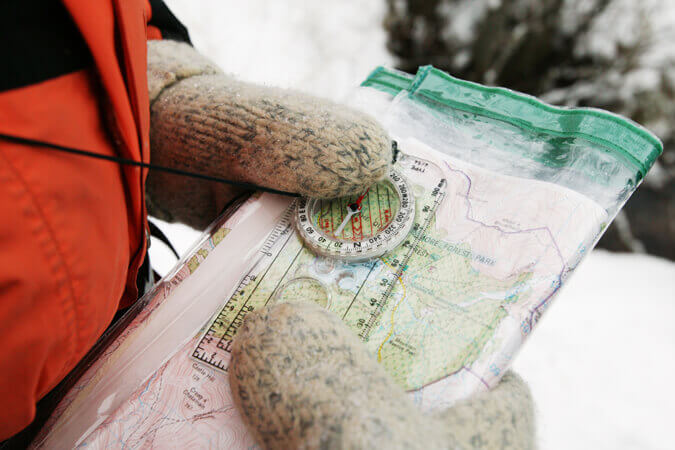
Dachstein mitts don’t necessarily mean that you won’t be able to use a compass or to navigate, as shown by our director Andy Bateman
For the other 3 items – are they really necessary? Are there other more important things you should make sure you have first?
Our top tips to you personally would be:
bring a map and if you have one a GPS &/or compass
Even on a guided trip it is useful to have your own map. These days you can quite easily get digital mapping on your phone. Personally we don’t like to rely on this as we don’t have the most up-to-date phones and the screen size can be really irritating. It is useful to be able to enlarge portions of the map though, especially as your eyes start to find the small print a bit more of a strain. However, if you’re going to rely on digital images, make sure you have an extra power pack for your phone. Personally this would rank higher up on our own list than flipflops or lip balm.
Because we can’t go on holiday in the main summer season (a dream for the future maybe), and therefore we are almost always away in October, we always pack gloves and hat. If you’re travelling in the main part of the summer season we’d recommend always packing a sunhat and sunscreen (even in Scotland) but not necessarily a midge net. Check our blog on how to have a midge free vacation
Be sure to have at least one item for yourself which you would consider a luxury (a bit like Desert Island Discs).
Our luxury items include:
a book/kindle
a knitting project
a teddy (perhaps only a consideration for the youngest member of your group)
chocolate
your favourite hiking snack which you buy at home
tea (for the British audience) or your favourite coffee
But don’t forget to leave a wee bit of space (if you can) for souvenirs!
What would your luxury item be?
2019 has been a spectacular season for foraging in the Cairngorms. Scotland’s wild larder should be renowned across the world. Whether you’re by the sea or up in the mountains, foraging in Scotland is bountiful. Our European guests are so jealous. In many parts of Europe mushroom sites are closely guarded secrets and foragers have to be out early to be in with a chance of finding anything.
It’s been unavoidable to see/pick mushrooms and we’ve also been quite lucky with berries etc. The crows are feasting on rowan berries at the moment, which I don’t mind if they leave the strawberries, bilberries and raspberries for us. One of the few benefits of a damp, showery autumn and a coolish summer with bursts of warmth, has been the proliferation of ceps, chanterelles and all kinds of fungi throughout the woods for weeks.
Foraging is a fantastic activity to introduce to your kids – but always make sure you know what you’re doing. An introductory course from a knowledgeable guide is a great way to do this.
This year (2019) has been such a spectacular mushroom season that our larder is over-loaded with dried ceps and boletus. At one point it was impossible to take a walk in the woods, without coming back with several mushrooms. Do be careful though in season to make sure you have knife with you. It is frowned upon not to use a knife to remove the boletus mushrooms when you find them.
Check the mushroom code and make sure you know what you’re doing before you head out on a fungal foray.
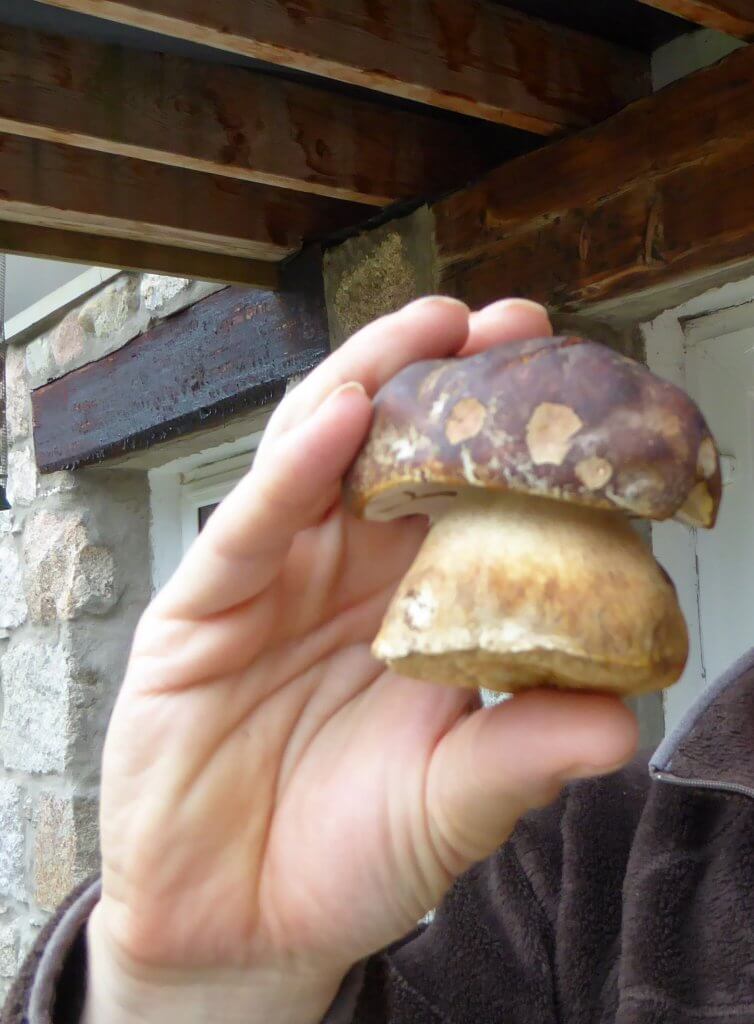
Scottish Wildlife Trust – details on how to identify and where to find the Cep
Further details and intro to “Fascinated by Fungi”
These are the most reliable crop of mushrooms in the Cairngorms. We manage to pick some every season and they’re usually up earlier than anything else. A great crop for summer usually up in July and August.
They freeze well and make great soup with some cream and onion. We tend not to dry chanterelle mushrooms. Freezing does make them a wee bit more watery but they are still good in soup and risotto. They maintain their texture well in the freezer.
NB There is a false chanterelle which you also find here in the Cairngorms but there are distinct differences between the 2. If you know what you’re looking for, it’s easy to be sure that you’re picking the right one. We have had guests bring back a whole crop of false chanterelles though, so maybe it’s not obvious to everyone.

This is one of our absolute favourites. There’s always too much to eat in one go and it dries a treat. The taste is relatively mild but it has an amazing firm texture completely unlike any commercial mushroom. It is great in mushroom soup, risotto, mushroom pie, venison or beef casserole in fact it is a substantial mushroom which can be cooked in virtually any mushroom recipe, including risotto.
These fungi only appear one at a time. You’ll never find a cluster as you can do with virtually all other fungi we’ve learnt to identify. They are so large it must take all the plant’s energy to produce one.
We don’t come across a cauliflower fungus every year, despite checking the site where it was previously found. It’s such a huge investment by the plant to produce such a large “fruit” that it needs perfect conditions to put one up.
The only down side is that the cleaning can be a bit of a faff – but at least you can wash it as it doesn’t absorb much water, but it helps to shake it upside down before you take it home to minimise the bugs.
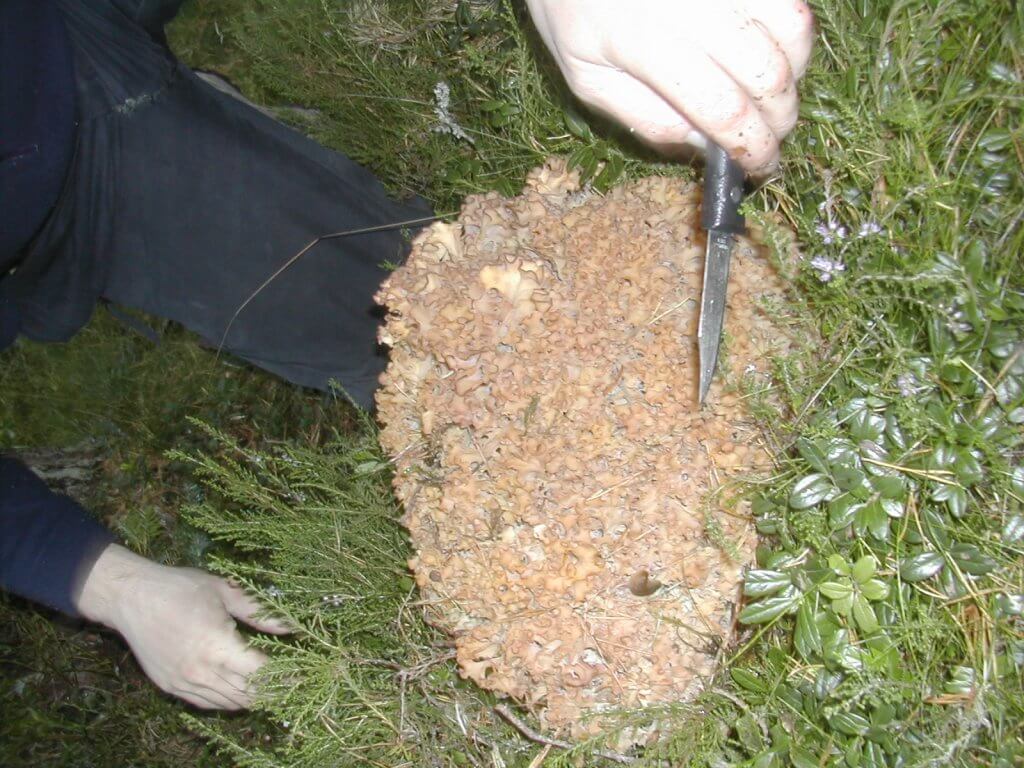
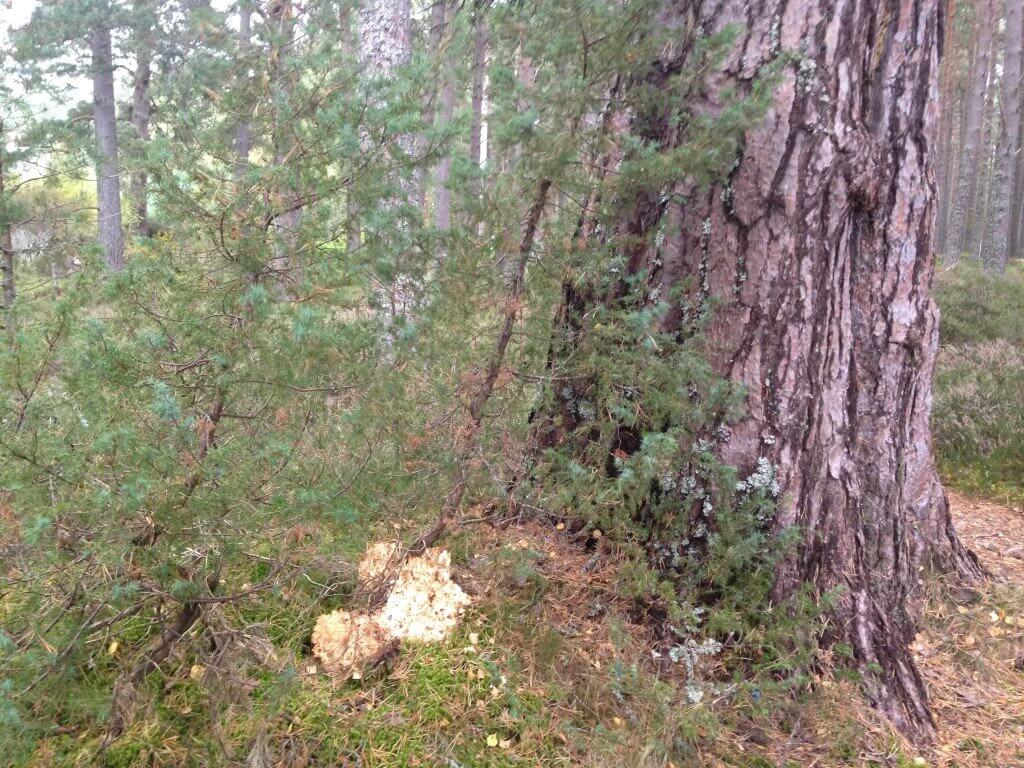
We don’t find this one as often as we’d like. It’s a great firm edible mushroom.
Further details and help with identification
If you’d like to gain more confidence in your mushroom identification, enquire with us for a foraging day. There are many other foraging options which go alongside the mushrooms including a plethora of wild berries.
One of the questions we get asked most frequently from guests at Fraoch Lodge is a walk recommendation. Our accommodation guests are looking for short walks in the Cairngorms which they can complete without a guide.
People will be looking for all kinds of walks – some without much ascent; some without much time commitment. However, most people are looking for a good viewpoint.
We’ve picked out some of our favourites here, but do bear in mind that walks which are most accessible are also most popular. You might not be on your own, but you still won’t be part of a crowd.
This is virtually the most popular walk in the are, but for a reason. Not only is it very accessible, with clear waymarked paths, but it’s also in Glenmore just a few minutes drive from the centre of Aviemore and accessible by public bus.
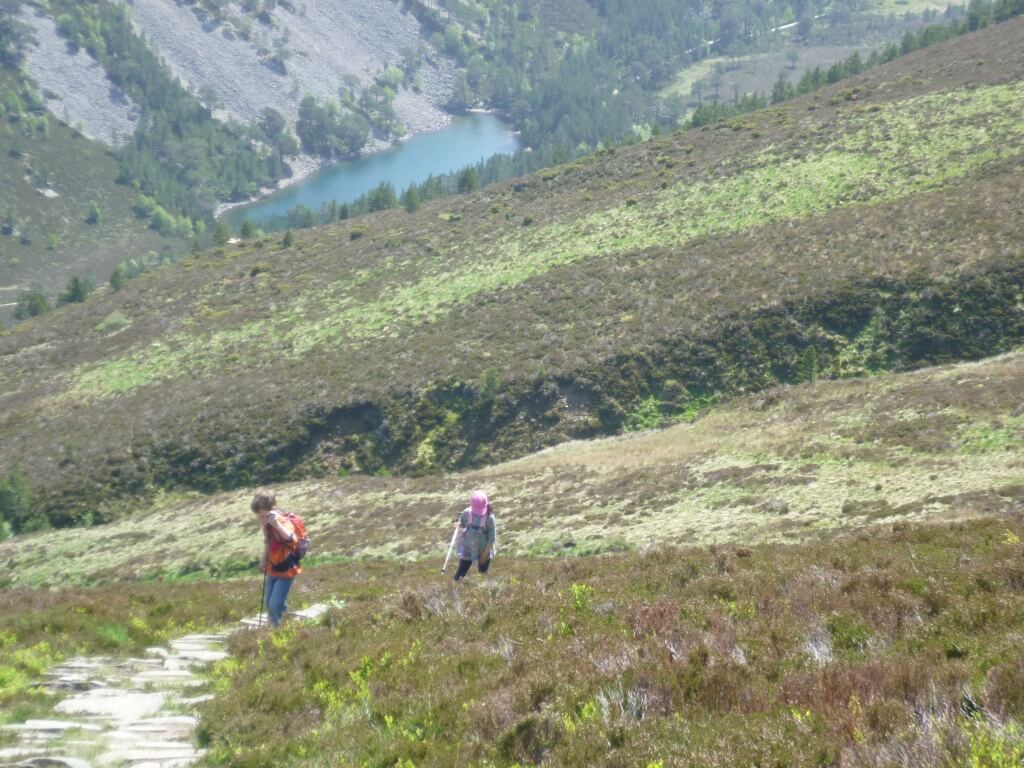
Beautiful views and a clear path on the ascent of Meall a’Bhuacaille
We usually park by Glenmore Lodge and start the walk here. The path starts from the end of the road and heads up past the Green Lochan and on to Ryvoan Bothy. At the bothy you can take a break and check the bothy out before starting the climb up the hill. It is a steep path which zigzags backwards and forwards along the hillside before levelling out towards the top of the hill. Bear mind before you set out that no matter how warm it is before you set out, it could be pretty breezy on the summit and you should always have an extra layer with you in case you stop for a wee bit on the top to take in the view.
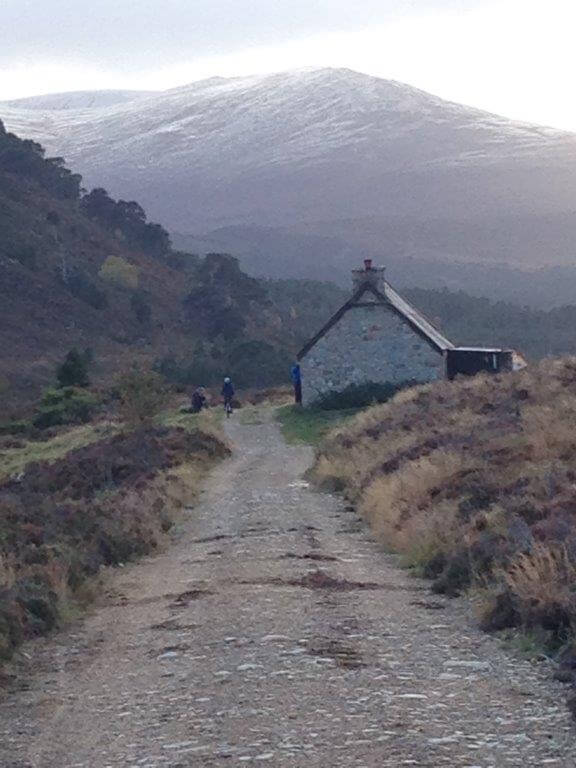
From the summit, you head down to a coll where the path splits. You can continue along the ridge to further summits like Craiggowrie, or you can head down on the basic circuit into Glenmore. The path ends up at the Glenmore Forest Visitor Centre and Cafe, near the Cairngorm Reindeer Centre, where you can pick up the walking track back to Glenmore Lodge.
More detailed walk description
Right next to one of the most popular walks on the Rothiemurchus estate, the wee diversion to the top of Ord Ban is surprisingly quiet. The majority of visitors stick religiously to the wide path circumnavigating Loch an Eilean. This is a beautiful route through some spectacular Caledonian pine forests, which though stunning, doesn’t offer many views above loch level. (NB – if you’re there at the right time of year you’ll be able to snack on wild blueberries as you go around the loch.) If you do go to the top of Ord Ban, you will be rewarded by surprisingly panoramic views.
The joy of this particular walk is that it is not accesible by public transport. It is possible to reach it along the Badenoch Way and you can drive to the start, but you are far more likely to see locals out to stretch their legs or walk the dog, than you are to bump into our visitors to the area. It is particularly beautiful to catch the setting sun here, as you can see in the photos below.
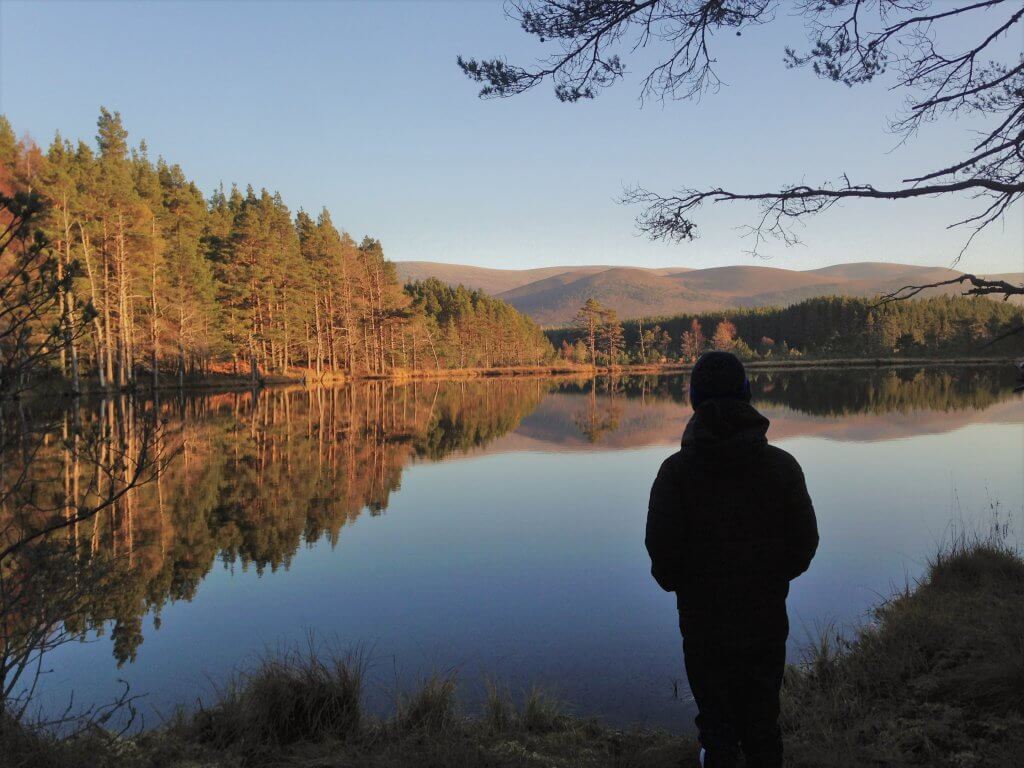
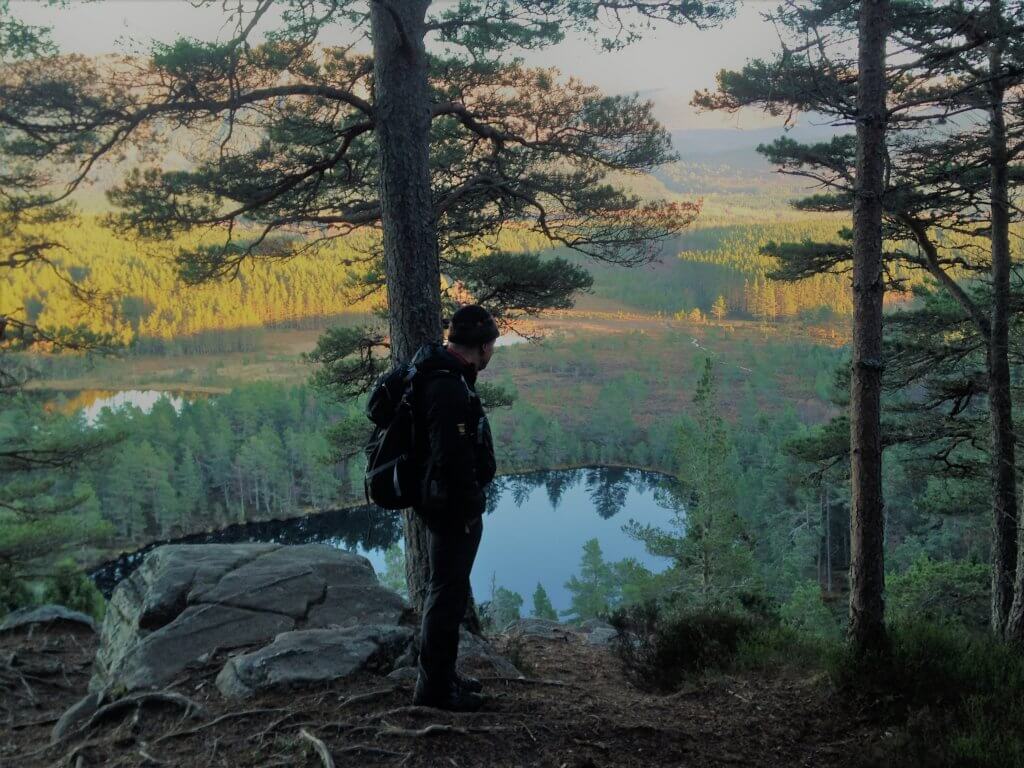
This is a great wee walk with magnificent views of the mountains beyond. There is a marker at the top of the hill which points out what you’re seeing from the top. It’s a circular walk from the centre of town. It takes you up along next to a stream and a wee waterfall to the top of a crag looking out over the whole of Strathspey.
This walk is accessible by public transport though as it starts from Grantown and not Aviemore it is less populara and more likely to offer you unique photo opportunities.
Despite being walking distance from the centre of Aviemore, this walk is surprisingly quiet. It is more than likely that you’ll bump into someone else on the route, but you could walk in your own space most of the way.
We highly recommend this walk if you’ve got a few hours to spare waiting for your train or for pick up in Aviemore. It’s very easy to get to the walk. It starts from the youth hostel in Aviemore. Drop your bags off safely in Aviemore – you should be able to store them at the station, or if you’re lucky the youth hostel might be able to look after them for you. Then take the underpass beneath the A9 and follow the signs for the viewpoint. It’s quite a short walk, and if you have less than an hour to spare you could just walk around the lochans at the bottom of the crag.
There’s a clear path up to the top of the crag for a splendid view across Aviemore and the high Cairngorms beyond. Do be aware though that there is quite some footfall on the path and in winter it can get icy.

The view from the top – 3 generations made it up the hill!
Full details of all these walks plus maps can be found on the Walkhighlands website but you can also pick our brains if you’re staying here. Some of the routes can form part of our self-guided itineraries.
These are just a few of the examples of wee walks you can do when you come for a visit to the Cairngorms National Park. They can be attempted by almost anyone and included in a day when you also visit a distillery or go on another adventure like the Zipwire in Alvie
All content © Copyright Scot Mountain Holidays 2025
Responsive web design by Summit Web Solutions